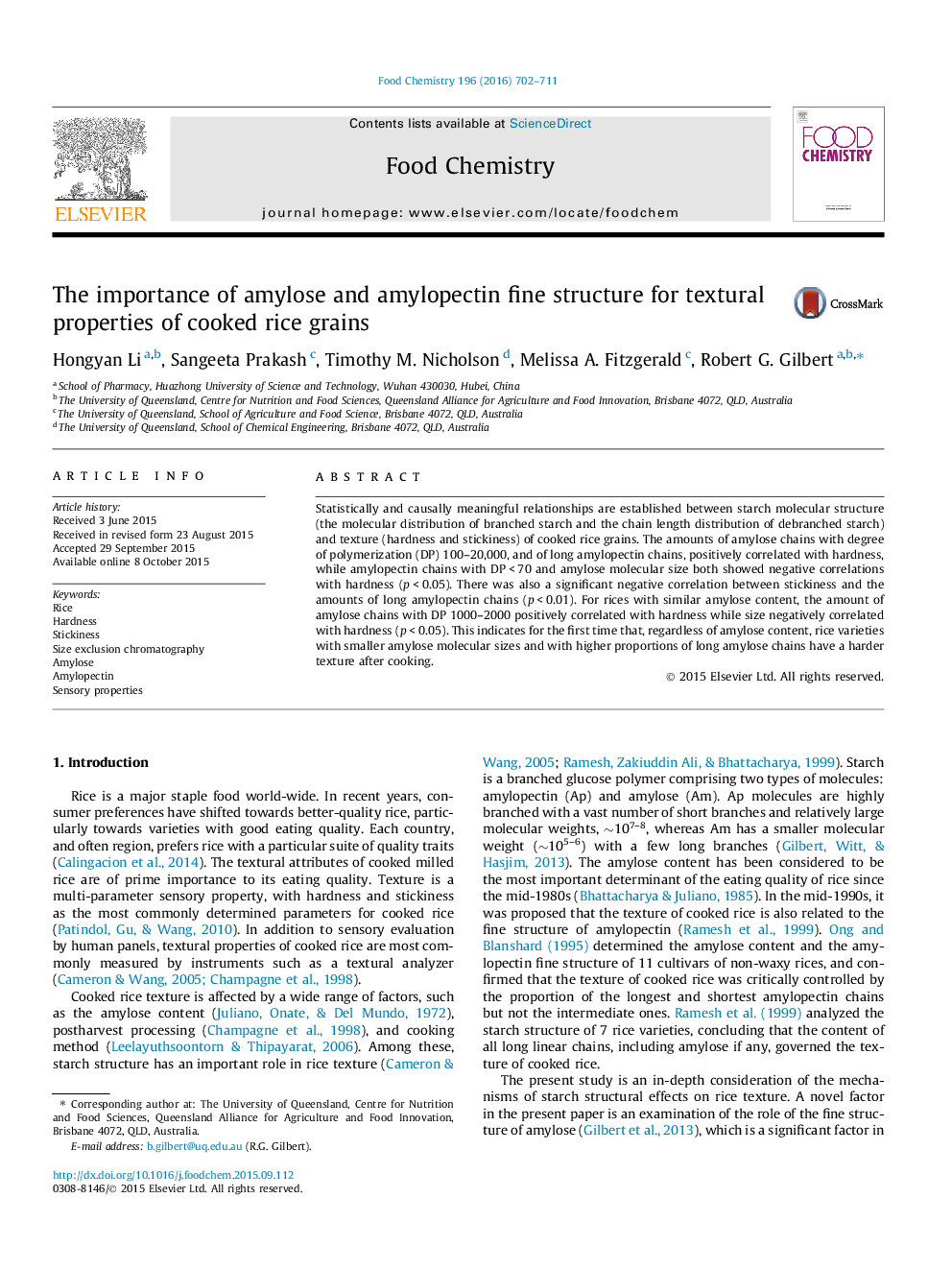| Article ID | Journal | Published Year | Pages | File Type |
|---|---|---|---|---|
| 1184194 | Food Chemistry | 2016 | 10 Pages |
•Starch fine structures were measured by size-exclusion chromatography.•Amylopectin chain-length distribution was fitted in a biosynthesis model.•Hardness and stickiness of cooked rice grains were tested by texture analyzer.•Statistical correlation found between structural characteristics and rice texture.
Statistically and causally meaningful relationships are established between starch molecular structure (the molecular distribution of branched starch and the chain length distribution of debranched starch) and texture (hardness and stickiness) of cooked rice grains. The amounts of amylose chains with degree of polymerization (DP) 100–20,000, and of long amylopectin chains, positively correlated with hardness, while amylopectin chains with DP < 70 and amylose molecular size both showed negative correlations with hardness (p < 0.05). There was also a significant negative correlation between stickiness and the amounts of long amylopectin chains (p < 0.01). For rices with similar amylose content, the amount of amylose chains with DP 1000–2000 positively correlated with hardness while size negatively correlated with hardness (p < 0.05). This indicates for the first time that, regardless of amylose content, rice varieties with smaller amylose molecular sizes and with higher proportions of long amylose chains have a harder texture after cooking.
